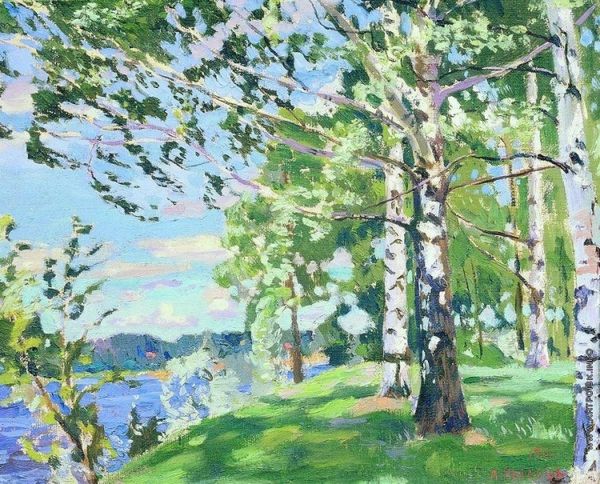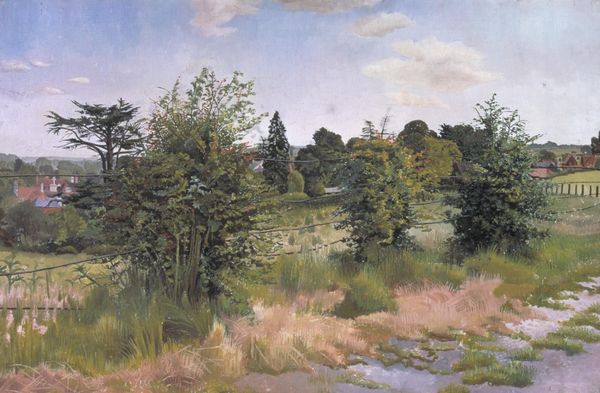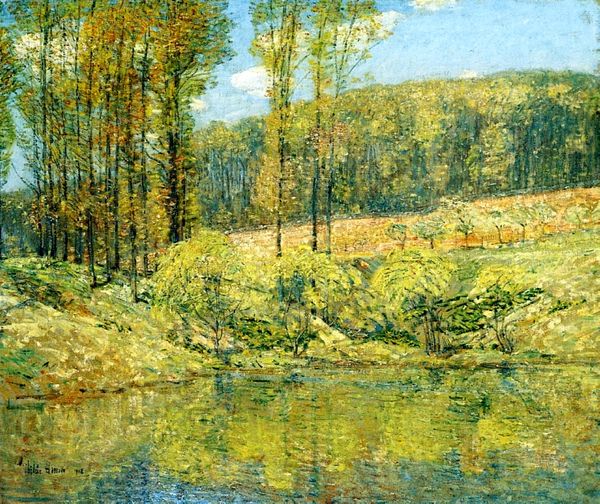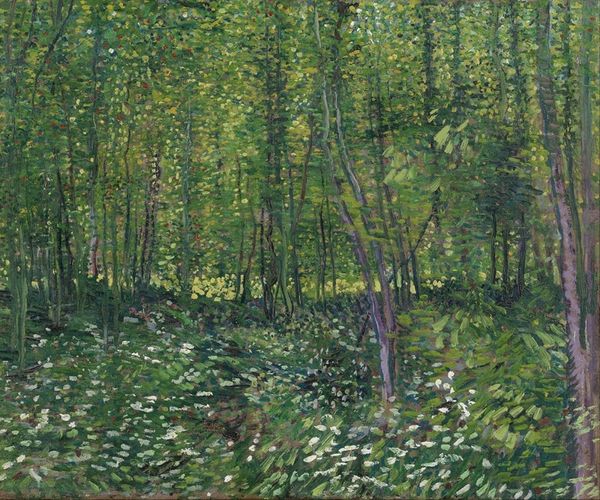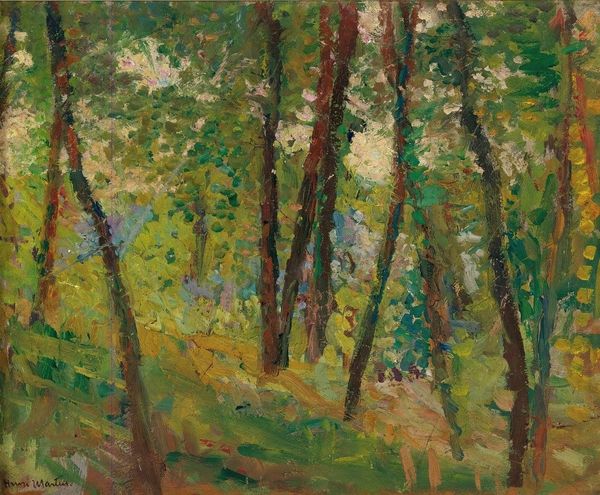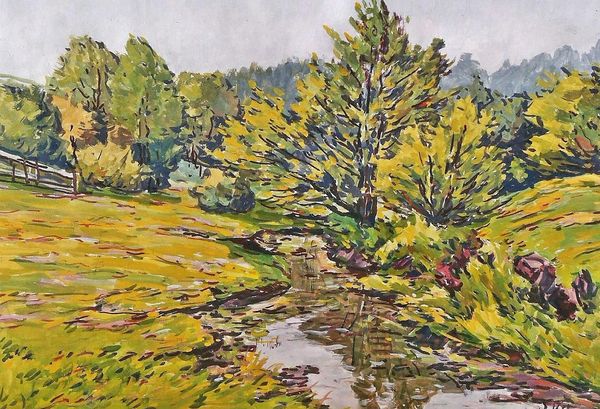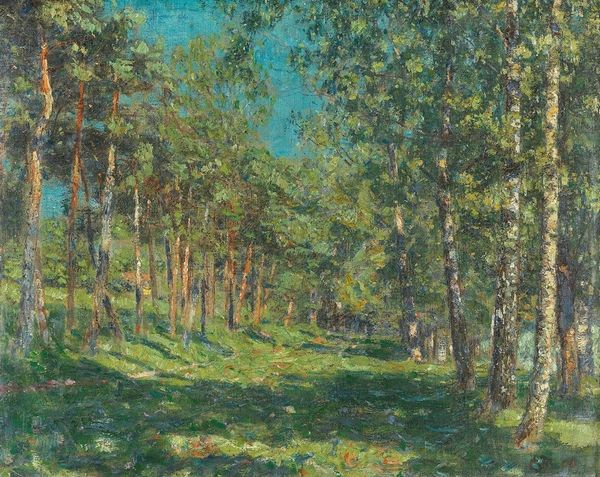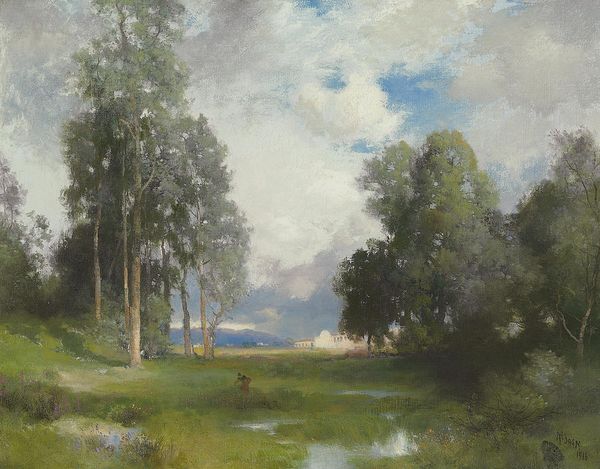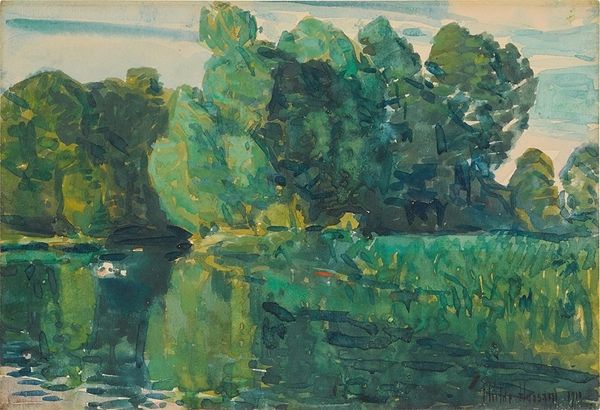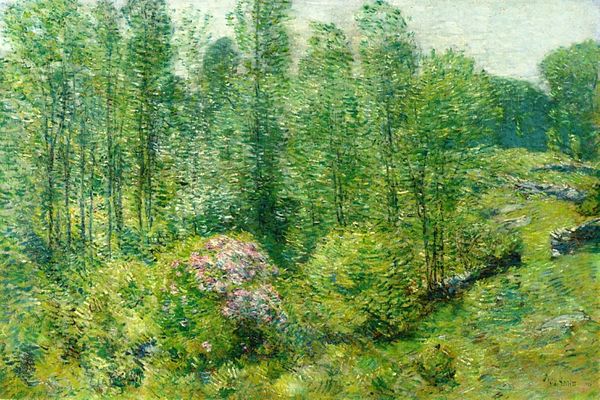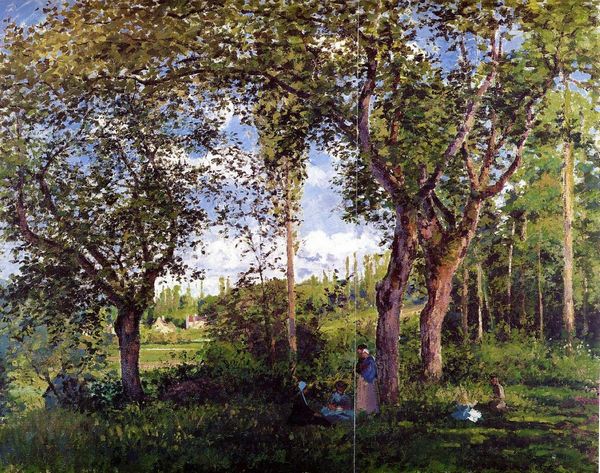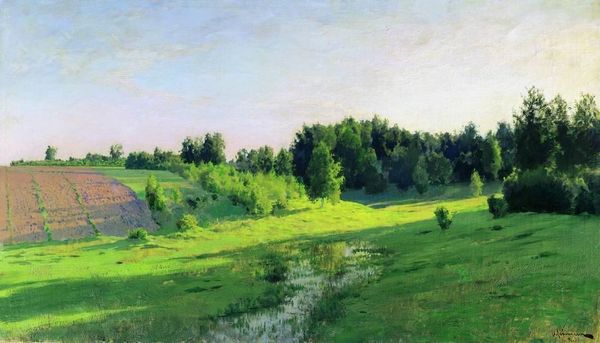
Copyright: Public domain
Curator: This is Arkady Rylov's "Backwoods," painted in 1920. Rylov, often associated with romantic landscapes, gives us this view into the heart of the Russian forest. Editor: My first thought? That light is utterly bewitching. It filters through the canopy in such a way that makes me want to just…step inside. The layering feels deliberate, like veils lifting. Curator: Precisely! Look how the sunlight dapples the leaves. It's painted "en plein air," so you sense that immediacy, the artist wrestling with the fleeting effects of light and shadow in the moment. Editor: Makes you wonder where he sourced the pigments from, right? Was he grinding them himself, maybe with ochre dug straight from that forest floor? And what about the canvas support - was it locally produced linen, or something more commercially woven? These materials themselves are witnesses to the economic landscape of the time, a record of their origin. Curator: I imagine the smell of the linseed oil mixing with the damp earth. Though beyond its material construction, it suggests something deeply romantic about nature itself – nature that gives to the artist everything he need. There's a kind of reverence there. Editor: Oh, absolutely! I’d also want to examine that the texture, too, really dig into those brushstrokes. I wonder how those impasto marks hold a visual trace of the painter's gesture. You could almost reconstruct the rhythm of his working day, the sheer physical labor of transforming raw matter into representational form. It makes you realize just how mediated our relationship to the landscape truly is, both then and now. Curator: Yes, it also reveals a subjective feeling of the artist: almost like they're hiding, peeking into a secret glade, the sunlight a whispered secret only the initiated may discover. Rylov invites us to breathe that secret air! Editor: That makes me think, the canvas itself a product – almost like a commercial commodity designed to fuel a very particular kind of consumer desire…the hunger for the pastoral idyll. What better subject, if nature it the greatest spectacle. Curator: Yes, I see that, especially when we begin to examine the materials themselves! Thinking about its original audiences, perhaps city dwellers seeking a vicarious taste of unspoiled wilderness. Editor: Precisely. And that contrast adds layers of complexity to what we're seeing. Curator: The dialogue here between the idealized scene, and very material, production makes it such an interesting landscape to look at, still. Editor: A constant push and pull—the dirt and the dream, inextricably bound together.
Comments
No comments
Be the first to comment and join the conversation on the ultimate creative platform.
